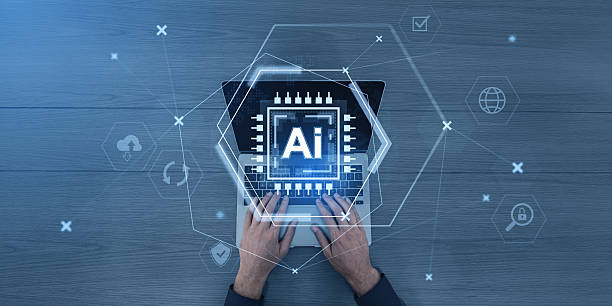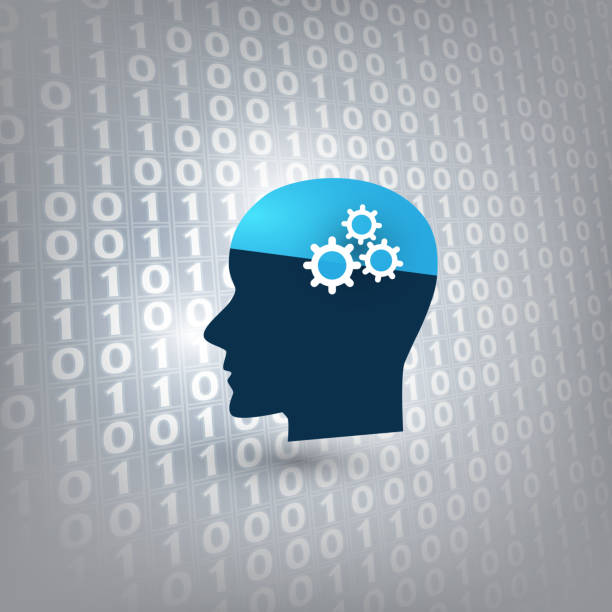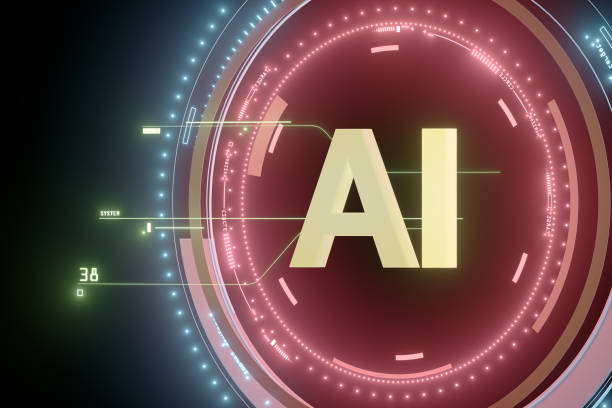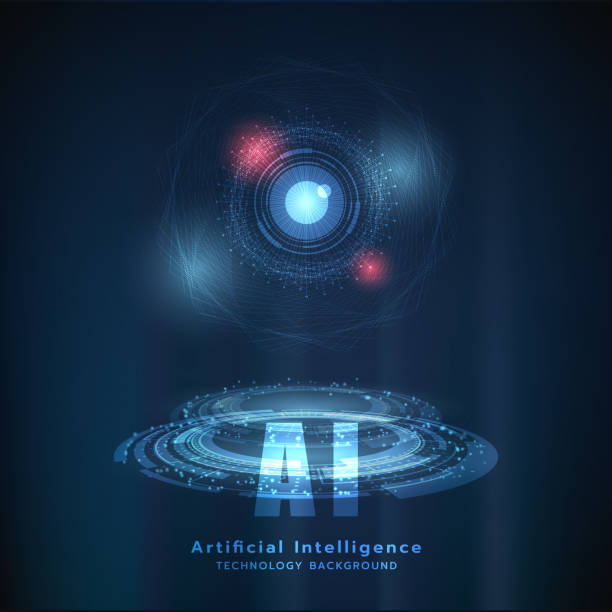What is an AI Robot? Definitions and Key Concepts

An AI Robot (Artificial Intelligence Robot) is a combination of two important technological fields: #artificial_intelligence and #robotics.
Simply put, an #AI robot is a machine equipped with artificial intelligence, capable of performing various tasks autonomously and intelligently.
These robots can analyze data using complex algorithms, make decisions, and adapt their behaviors based on environmental conditions.
The precise definition of an AI robot depends on its application and complexity, but overall, the main goal of creating these robots is to build machines capable of mimicking human behavior and even going beyond it.
To better understand this concept, it is necessary to first become familiar with the basic concepts of artificial intelligence and robotics.
Artificial intelligence refers to a system’s ability to perform tasks that typically require human intelligence, such as learning, reasoning, problem-solving, and understanding natural language.
Robotics deals with the design, construction, operation, and application of robots.
The integration of these two fields leads to the creation of robots capable of performing complex and diverse tasks in various environments.
Are you disappointed with your online store’s low conversion rate?
Rasaweb is your definitive solution with professional e-commerce website design!
✅ Increase your sales and revenue
✅ Unparalleled user experience for your customers
⚡ Get a free consultation now!
Main Components of an AI Robot

An AI robot is composed of various components, each playing a crucial role in its overall function.
These components include: Sensors: Sensors help the robot gather information from its surroundings.
This information can include temperature, light, sound, images, and more.
Processor: The processor is the robot’s brain, responsible for analyzing data collected by sensors and making decisions.
AI Algorithms: These algorithms help the robot learn, reason, and solve problems.
Machine learning algorithms, neural networks, and optimization algorithms are among the most important AI algorithms.
Actuators: Actuators allow the robot to interact with its environment.
These actuators can include motors, arms, wheels, and other mechanical components.
Power Source: The power source provides the energy required for the robot’s operation.
Batteries, solar cells, and wired power supplies are among the most common power sources for robots.
Software: Software is responsible for controlling and coordinating the robot’s various components.
This software can include operating systems, drivers, and application programs.
The interaction of these components enables the AI robot to perform various tasks autonomously and intelligently.
Widespread Applications of AI Robots in Various Industries

AI robots have widespread applications in various industries and are significantly changing and transforming industries.
In the manufacturing industry, these robots can be used for automating production lines, quality inspection of products, and performing dangerous and repetitive tasks.
In the medical industry, surgical robots, nursing robots, and rehabilitation robots help doctors and nurses provide better services to patients.
In the agricultural industry, farming robots can be used for planting, tending, and harvesting agricultural products.
In the service industry, service robots can be used to provide customer services in hotels, restaurants, and stores.
In the military industry, military robots can be used for performing dangerous missions and identifying threats.
In addition to these industries, AI robots have diverse applications in education, transportation, energy, and other industries.
The use of these robots leads to increased productivity, reduced costs, improved quality, and enhanced safety in various industries.
| Industry | AI Robot Application |
|---|---|
| Manufacturing | Production line automation, quality inspection |
| Medical | Surgery, nursing, rehabilitation |
| Agriculture | Planting, tending, harvesting |
| Services | Customer services in hotels and restaurants |
What are the advantages of using AI robots?

The use of AI robots has numerous advantages, which has led to their adoption in various industries.
Some of the most important advantages of using these robots include increased productivity. AI robots, with their ability to work around the clock without fatigue, can significantly boost productivity.
Cost reduction. AI robots, by replacing human labor in some tasks, can reduce costs related to salaries, insurance, and other human resource benefits.
Improved quality. AI robots, with high precision and repeatability, can improve the quality of products and services.
Increased safety. AI robots can be deployed in dangerous and hazardous environments instead of human labor, thereby enhancing safety.
Performing repetitive tasks. AI robots can automate repetitive and tedious tasks, freeing up human labor for more creative and complex assignments.
Better decision-making. AI robots, by analyzing large and complex data, can make better decisions than humans.
Are you bothered by losing customers who have visited your site to make a purchase?
Rasaweb is your specialized solution for having a successful online store.
✅ Significant increase in your online sales
✅ Building trust and professional branding with customers⚡ Get a free consultation from Rasaweb specialists!
Challenges and Limitations of AI Robots

Alongside their numerous advantages, AI robots also face challenges and limitations.
One of the most significant challenges is the high cost of designing, building, and maintaining these robots.
Additionally, AI robots require high expertise and technical knowledge for programming, training, and maintenance.
Another challenge involves ethical issues related to the use of AI robots.
For example, there are concerns about the loss of human jobs due to replacement by robots.
Furthermore, questions arise regarding the accountability of robots in case of errors and damages.
Another limitation is the inability of AI robots to understand human emotions and feelings.
This limitation means that robots cannot perform adequately in situations requiring empathy and emotional understanding.
Moreover, AI robots still face limitations in learning and adapting to new environments and require extensive training data to improve their performance.
Types of AI Robots Based on Application
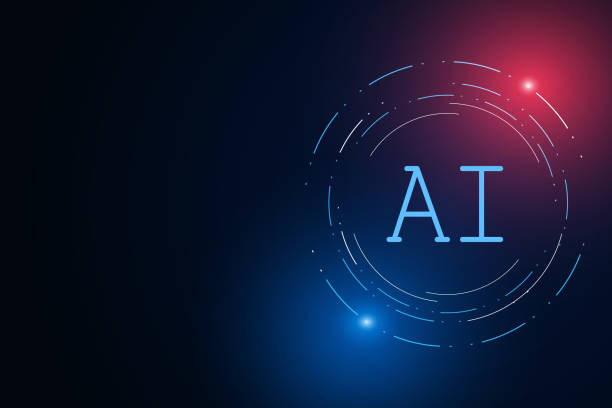
AI robots are categorized into different types based on their application.
Industrial robots for production line automation, medical robots for surgery and rehabilitation, agricultural robots for planting and harvesting, service robots for customer service, and military robots for dangerous missions are among the common types of these robots.
Each of these robots has its specific features and capabilities and is designed for particular tasks.
For example, industrial robots typically have powerful and precise arms capable of performing repetitive tasks at high speeds.
Medical robots must possess high precision and delicacy to successfully perform complex surgeries.
Agricultural robots must be capable of working in harsh weather conditions and identifying and harvesting various crops.
Service robots must be capable of interacting naturally with humans and providing quality services.
Military robots must be capable of withstanding tough wartime conditions and performing dangerous missions.
In general, selecting the appropriate AI robot type depends on the specific application and needs of each industry.
Key Technologies in the Development of AI Robots

The development of AI robots requires the use of various technologies.
Some of the most important of these technologies include machine learning, deep learning, natural language processing, computer vision, and advanced robotics.
Machine learning enables AI robots to learn from data and improve their performance without explicit programming.
Deep learning is a type of machine learning that uses deep neural networks to analyze data and extract complex features.
Natural language processing enables AI robots to understand human language and interact with it.
Computer vision enables AI robots to process images and videos and extract useful information from them.
Advanced robotics deals with the design and construction of robots with advanced mobility and control capabilities.
The use of these technologies enables AI robots to perform complex and diverse tasks autonomously and intelligently.
| Technology | Description |
|---|---|
| Machine Learning | Learning from data without explicit programming |
| Deep Learning | Use of deep neural networks |
| Natural Language Processing | Understanding and interacting with human language |
| Computer Vision | Processing images and videos |
What Will Be the Future of AI Robots?
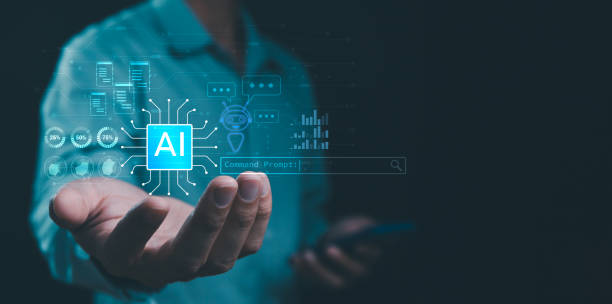
The future of AI robots is very bright and full of potential.
With the continuous advancement of technology, it is expected that AI robots will play a much more significant role in human lives in the near future.
These robots will be able to perform more complex tasks and will be more widely used in various industries.
For example, in the medical industry, surgical robots will be able to perform more complex surgeries with greater precision and speed.
In the transportation industry, self-driving cars equipped with AI robots will be able to significantly reduce traffic and increase safety.
In the education industry, teacher robots will be able to provide personalized education to students.
Furthermore, it is expected that AI robots will also be widely used in homes in the future, assisting people with daily tasks.
However, it is necessary to consider the ethical issues related to the use of these robots to prevent their misuse.
Disappointed with your e-commerce site’s low conversion rate? Rasaweb transforms your e-commerce site into a powerful tool for attracting and converting customers!
✅ Significant increase in visitor-to-buyer conversion rate
✅ Unparalleled user experience to increase customer satisfaction and loyalty⚡ Get a free consultation from Rasaweb!
Social and Economic Impacts of AI Robots
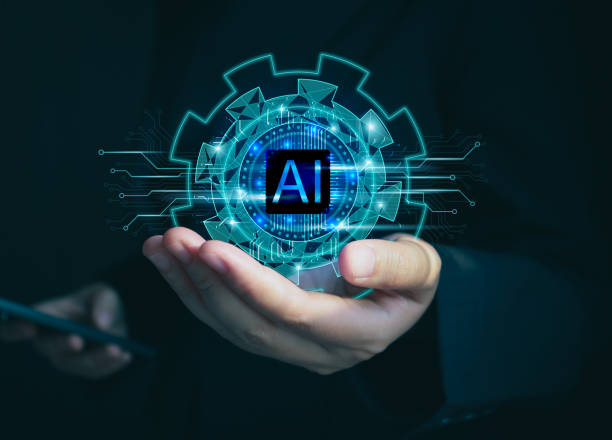
AI robots will have profound impacts on society and the economy.
On the one hand, these robots can lead to increased productivity, reduced costs, and improved quality of life.
On the other hand, there are concerns about the loss of human jobs due to replacement by robots.
To mitigate these concerns, governments and organizations need to provide training and empowerment programs to prepare the workforce for new jobs.
Additionally, laws and regulations need to be developed to govern the use of AI robots to prevent their misuse.
Another impact is the change in required labor market skills.
With the entry of AI robots into various industries, the demand for technical and specialized skills in artificial intelligence and robotics will increase.
Therefore, educational systems and universities need to adapt their curricula to the new demands of the labor market.
In general, to benefit from the advantages of AI robots and reduce their negative impacts, a comprehensive and coordinated approach needs to be adopted at the societal and economic levels.
How to Build an AI Robot? A Step-by-Step Guide
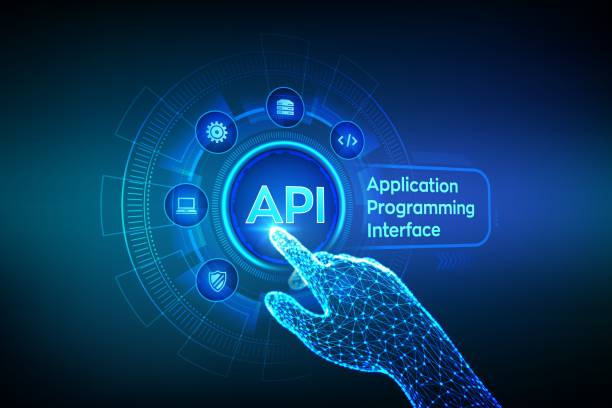
Building an AI robot can be a challenging yet very exciting project.
To begin, you need to have a clear idea about the application of your AI robot.
Then, you need to acquire the necessary components.
These components include a microcontroller, sensors, actuators, a power source, and software.
After acquiring the components, you need to connect them and program the required software.
For programming the AI robot, you can use various programming languages such as Python, C++, and Java.
You can also use AI libraries and frameworks like TensorFlow and PyTorch.
After programming the software, you need to train your AI robot.
To train the AI robot, you need to collect appropriate training data and apply machine learning algorithms to them.
Finally, after training, you need to test your AI robot and evaluate its performance.
If necessary, you can improve your AI robot‘s software and hardware to optimize its performance.
Frequently Asked Questions
| Row | Question | Answer |
|---|---|---|
| 1 | What is an AI robot? | An AI robot is a machine capable of understanding, reasoning, learning, and problem-solving, and can perform complex tasks with relative autonomy. |
| 2 | What are the most important applications of AI robots? | Key applications include industrial manufacturing, customer services (chatbots), medicine and surgery, autonomous transportation, space exploration, and military affairs. |
| 3 | What is the main difference between an AI robot and a regular robot? | A regular robot only follows programmed instructions, whereas an AI robot can learn from data, make decisions, and adapt itself to new environments. |
| 4 | How do AI robots learn? | They learn by identifying patterns and improving their performance through machine learning algorithms (such as deep learning, reinforcement learning) and processing vast amounts of data. |
| 5 | Can AI robots have emotions? | Currently, AI robots do not possess real emotions in the human sense. They can imitate or recognize emotions, but they do not understand or experience them. |
| 6 | What are the current limitations of AI robots? | Limitations include the need for large amounts of data, inability to understand abstract concepts, lack of true creativity, ethical issues, and challenges of generalizability in new environments. |
| 7 | What is the role of AI in the development of humanoid robots? | AI helps humanoid robots walk, maintain balance, understand their surroundings, interact with humans, and perform complex tasks. |
| 8 | How is the future of AI robots predicted? | It is predicted that AI robots will become smarter, more autonomous, and capable of performing more complex tasks in daily life and industry, and their interaction with humans will increase. |
| 9 | Can AI robots replace all human jobs? | It is unlikely that all human jobs will be replaced. Robots will take over many repetitive and dangerous tasks, but jobs requiring creativity, empathy, and ethical judgment will remain. |
| 10 | What ethical and social challenges arise with the expansion of AI robots? | Challenges include issues related to privacy, data security, ethical decision-making by robots, impact on employment, and accountability in case of errors. |
And other advertising services from Rasaweb Advertising Agency
- Smart Brand Identity: A fast and efficient solution for increasing sales by focusing on Google Ads management.
- Smart UI/UX: A creative platform to improve SEO ranking by customizing user experience.
- Smart Customer Journey Map: An effective tool to increase click-through rates with the help of marketing automation.
- Smart Website Development: Revolutionize customer acquisition with marketing automation.
- Smart Marketing Automation: An effective tool for user engagement through precise audience targeting.
And hundreds of other services in internet advertising, advertising consultation, and organizational solutions.
Internet Advertising | Advertising Strategy | Advertorial
Resources
What is an AI Robot?
Applications of Smart Robots in Industry
The Future of AI and Robotics
Smart Robots and Daily Life
? Are you looking for a major leap in the digital world? “Rasaweb Afarin” Digital Marketing Agency, with expertise in Search Engine Optimization (SEO), professional social media management, and user-friendly website design, guides your business towards success. With us, have a powerful and lasting presence in the online space.
📍 Tehran, Mirdamad Street, next to Bank Markazi, Kazeroun Jonoubi Alley, Ramin Alley, Plaque 6

